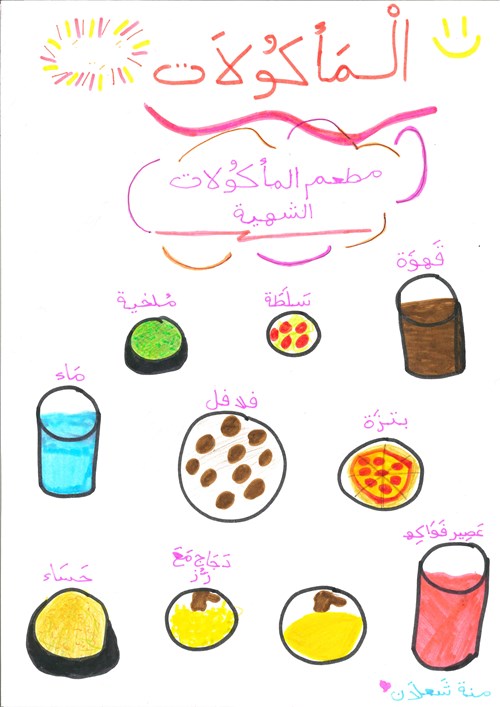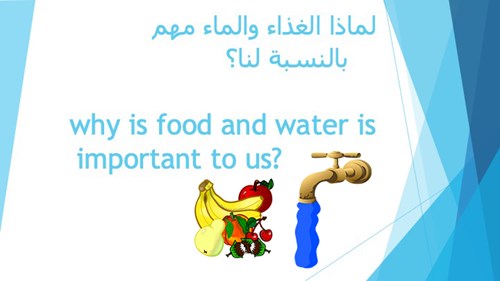Languages: Arabic - Satisfactory - Years 5 and 6
Portfolio summary
This portfolio of student work shows that the student uses spoken and written Arabic to exchange personal information and describe people, places and ideas related to their personal experiences and social activities such as celebrations, sport and other interests (WS1, WS2, WS3). The student makes shared decisions, provides suggestions and completes transactions (WS1). When participating in classroom routines and activities, the student follows shared rules and procedures, expresses opinions and asks for clarification (WS1). The student uses patterns of Arabic pronunciation and intonation when interacting (WS1, WS2). The student locates, classifies and organises information from a range of spoken, written and visual texts related to aspects of culture and lifestyle. The student presents ideas and information on topics of interest and aspects of culture in different formats for particular audiences (WS1, WS2, WS3). The student responds to a range of imaginative texts by expressing opinions on key elements, characters and actions for example, and makes connections with own experience. The student creates and performs short imaginative texts based on a stimulus, concept or theme (WS1, WS2, WS3). The student uses a variety of tenses and applies verb conjugation, basic conjunctions and a range of adjectives and adverbs to construct sentences and to produce short texts (WS1, WS2, WS3). The student translates texts from Arabic into English and vice versa, identifying words that are not easily translated, and creates bilingual texts for their own learning and for the school community (WS3). The student identifies ways in which their own biography, traditions and beliefs impact on their identity and influence the ways in which they communicate in Arabic and English (WS2).
The student identifies the role of vowels in softening and extending sounds and applies writing conventions to own constructions (WS1, WS2, WS3). The student distinguishes between the structure and features of different types of spoken and written Arabic texts and identifies ways in which audience, context and purpose influence language choices and the form of Arabic used (WS1, WS3). The student provides examples of how language use and ways of communicating vary according to the relationship between participants and the purpose of the exchange (WS2). The student identifies how languages influence one another, including the influence of indigenous languages of the Arabic-speaking world and regional languages such as Aramaic, Syriac, Phoenician, Persian, Kurdish and Turkish on Arabic. The student gives examples of how language use reflects particular value systems, attitudes and patterns of behaviour across cultures (WS2).


